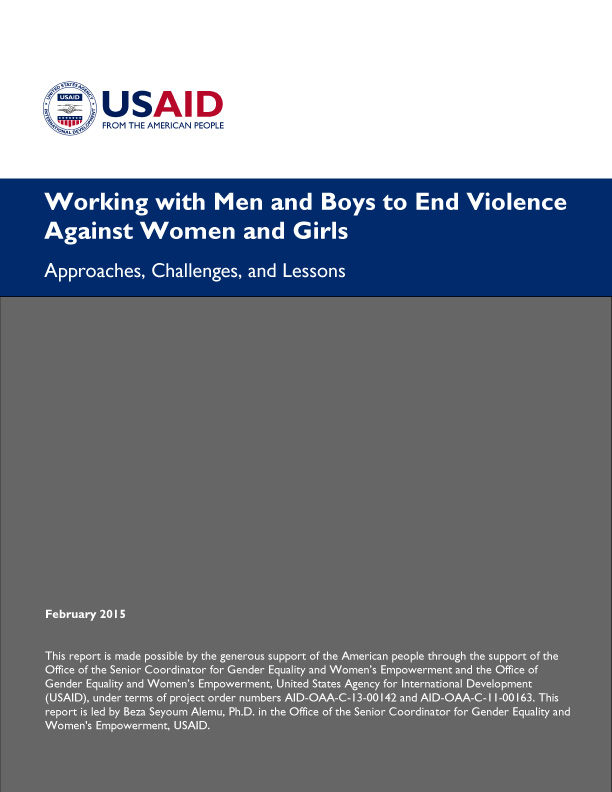It is now widely accepted that strategies to end violence against women and girls (VAWG) must include work with men and boys. Much of the evidence relating to such strategies comes from the health sector. Ending VAWG, however, requires coordinated work across many sectors. The need for a multi-sectoral response to the challenge of ending VAWG has focused attention on the opportunities for and challenges of male engagement strategies outside of the health sector. This report reviews documentation of work, outside the health sector, with men and boys on VAWG to identify promising approaches to, and emerging lessons from, these efforts.
Such approaches are grounded in an understanding of the links between social constructions of masculinity and men’s use of violence. Social constructions of gender almost always confer a higher social value on men than women, and privilege the masculine over the feminine. Male violence against women and girls is born of this privilege. The term “positive masculinities,” which is used in this report, has emerged in recent years as a way to characterize the values, norms and practices that gender-based work with men and boys seeks to promote in order to end VAWG.
This report reviews the published and grey literature on male engagement strategies for ending VAWG in five sectors from across the Global South. Sectors reviewed include economic growth, trade and agriculture; education; governance, law enforcement and justice systems; conflict, post conflict and humanitarian assistance; and social development.
Highlights from the review are provided below in sector briefs below:
- Economic Growth, Trade, and Agriculture [PDF, 488K]
- Education [PDF, 480K]
- Governance, Law Enforcement and Justice Systems [DOC, 70K]
- Conflict and Post-Conflict Humanitarian Assistance [PDF, 196K]
- Social Development [PDF, 196K]








Comment
Make a general inquiry or suggest an improvement.